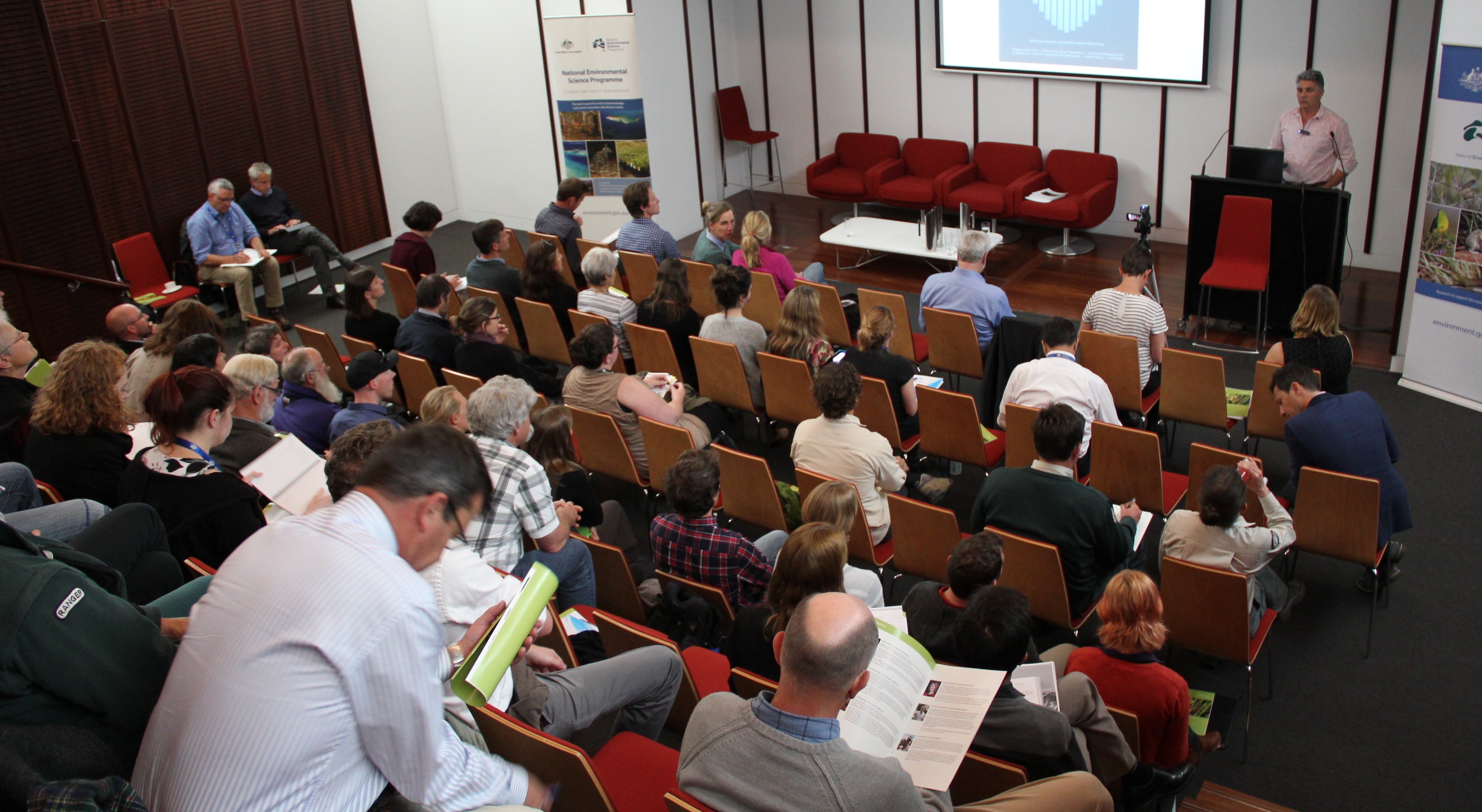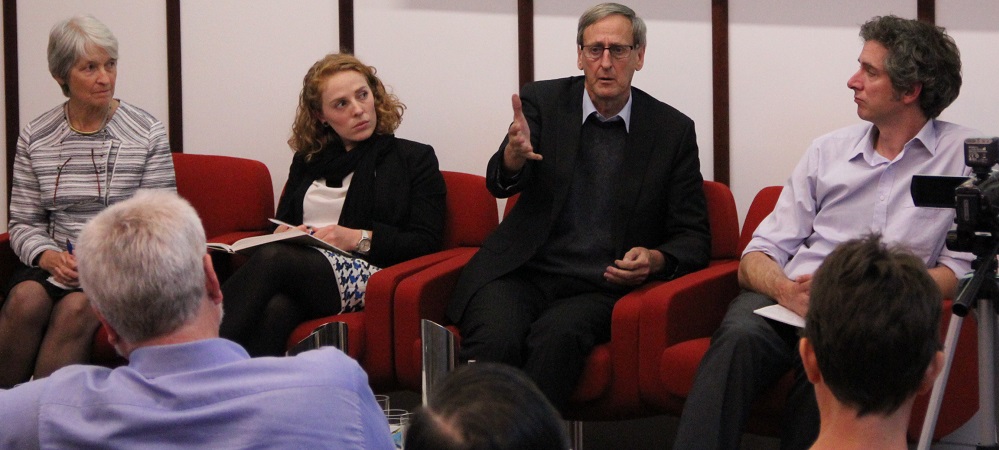
Our first research showcase
Wednesday, 07 December 2016The size of Australia’s feral cat population, the effectiveness of biodiversity offsets and recent successes in creating artificial breeding sites for
the swift parrot were some of the topics on display at the TSR Hub’s first annual showcase held in Canberra in October. Rachel Morgain, the Hub’s new
Knowledge Broker, takes us through what happened.
Over 100 policy-makers, land managers and researchers gathered at the National Portrait Gallery’s Liangis Theatre to engage with key findings from
across the Hub’s six research themes. Some of our newest early career scientists presented alongside leading international researchers. Presenters
grappled with how research could be put to most effective use in protecting and recovering Australia’s threatened species.
The discussions that followed our presentations revealed a high level of engagement with managers and policy makers, exploring how findings from the
Hub’s projects could be applied directly to decision-making and land management strategies. Audience members asked how to improve feral cat control
and where adaptive management strategies could be used to ensure greater success for threatened species.
Other presentations examined the economic value of environmental assets and community valuations of threatened species. These underscored the social
significance of policy decisions to invest in protecting threatened species.
Discussions also highlighted what we don’t yet know. Research on adaptive management will be used to understand the effects of fox baiting for malleefowl
and how this strategy can be more effectively applied. More publicly available data is also needed for us to better understand whether, and where,
biodiversity offsets are effective.
Representatives from the Australian Government Department of the Environment and Energy and the ACT Government particularly commended projects with
evident implications for policy and land management.

Hub stakeholders engaged in a panel discussion. From left: Judy West (Parks Australia and member of the Hub Steering Committee), Casey Harris (Office of the Threatened Species Commissioner), Steve Morton (Charles Darwin University and Chair of the Hub Steering Committee) and Sebastian Lang (Office of the Threatened Species Commissioner). Image: David Salt
Dr Andrew Weeks revealed surprising findings about the need to assess gene pool variation in threatened species translocations. This research suggests
that random genetic drift often drives genetic divergence in fragmented populations, over and above adaptive selection. Translocation of genetically
varied populations can help improve genetic diversity in isolated populations. This can ensure continued genetic connectivity between populations and
strengthen their capacity to adapt to changing environmental pressures. At Mount Buller, translocation strategies aimed at widening the gene pool of
mountain pygmy possums has helped create larger hybrids and more robust populations. This research has implications for other taxa, including plants,
showing how genetic strategies can work hand-in-hand with habitat restoration and threat management to contribute to more effective recovery of threatened
species.
The showcase concluded with feedback from a panel consisting of members of the Hub’s Steering Committee and the Office of the Threatened Species Commissioner,
who noted the level of collaboration on display throughout the day. Dr Steve Morton, Chair of the TSR Hub Steering Committee, congratulated the Hub
on its “unparalleled research cooperation and determination to seek solutions and make a difference.”
The panel praised the cross fertilisation of ideas throughout the showcase, seeing this as reflecting the strong partnerships being built between
researchers, land managers, policy advisers and decision-makers across the Hub’s projects.
Check out the showcase presentations on the TSR Hub YouTube Channel
For further information:
rachel.morgain@anu.edu.au
Top image:Professor David Lindenmayer shares the results of his environmental accounting analysis of Victoria’s Central Highlands. Image: David Salt